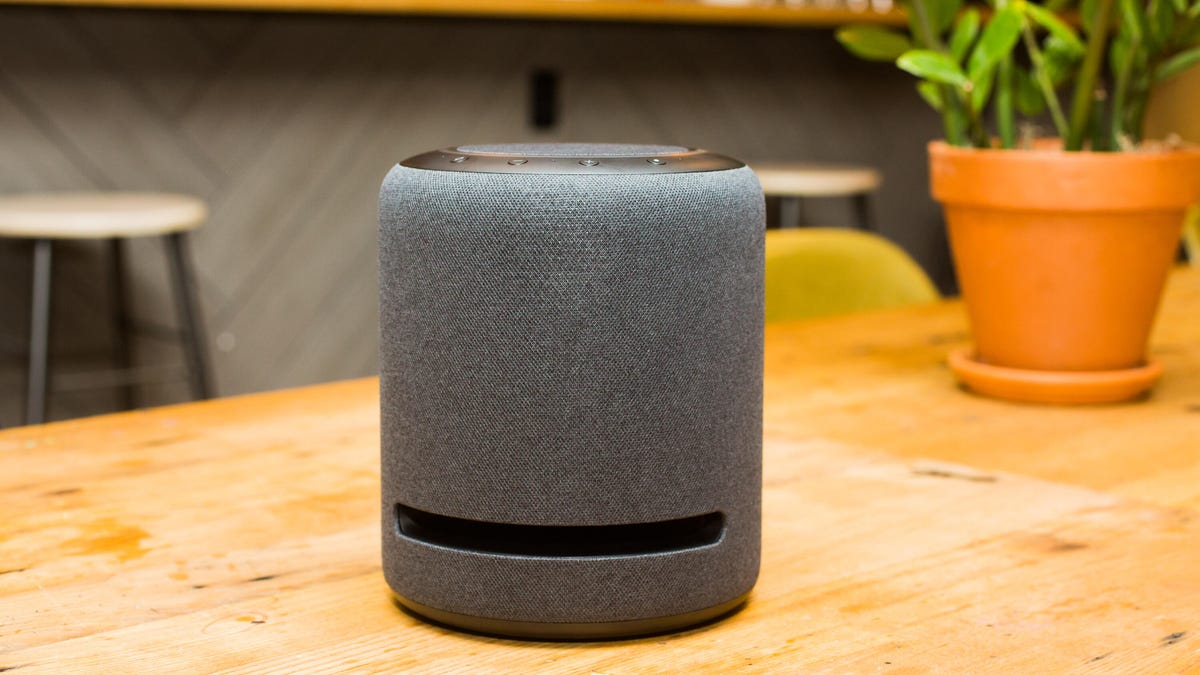This app lets you see IoT devices around you and what data they're taking
It'll show you the cameras, Bluetooth beacons and smart speakers around you and help you opt out of data collection.

A new app can help you learn what data an Amazon Echo Studio in a public place is collecting.
A new app launched in February will let you know what internet of things technologies are operating around you and what data they're collecting. The Internet of Things Assistant app and its infrastructure, created by Carnegie Mellon researchers, aims to give you more control over the devices tracking your activity and information.
With the app, you'll be able to see devices like public cameras with facial recognition technology, Bluetooth beacons tracking your location at the mall, and your neighbor's smart doorbell or smart speaker, according to a story published by Carnegie Mellon's Security and Privacy Institute. You can see what data these devices collect, and access privacy choices like opting in and out of data collection when available.
"Our research has shown that most people have little awareness about the amount of data collected today by IoT technologies," Norman Sadeh, a CyLab faculty member in Carnegie Mellon's Institute for Software Research and the principal investigator on the project, told CNET. "It also shows that many people would like to be better informed about the collection and use of their data by these technologies, especially in contexts where they don't expect this to happen. In addition, many of them would like the option to possibly opt in or out of some practices."
Regulations like the California Privacy Protection Act and the EU General Data Protection Directive require that people be informed about these data practices, Sadeh said. For example, the CCPA requires informing consumers at or before the point of data collection. "The problem is that there is no standard way for communicating such information to users in IoT contexts, as many of these technologies lack an interface to communicate with users -- whether to convey information about their data practices or expose opt-in/opt-out settings to people," he added.
However, the IoT Assistant app's usefulness depends largely on the research team and other people registering their IoT devices in an online portal, which requires publishing where your IoT devices are and what data they collect, so they can be added to the app's database.
CNET's Rich Brown tried the Internet of Things Assistant app from the warehouse office of the CNET Smart Home team, located in Louisville, Kentucky, and describes his experience as follows:
"I downloaded the app and signed up for an account from our office here in Louisville that probably has at least a dozen smart home products running at any given time. The sign-up process involved more steps than most commercial apps, but nothing that felt out of the ordinary given that this is part of an academic research project. Once I finished the sign-up process, the app showed me my location on a map of the local area, along with a filter to select or deselect certain kinds of IoT devices, for example devices that collect visual data, or audio data. What the map didn't show was any actual devices in the my immediate vicinity. That makes sense given that the app has only been live for a few weeks, but it underscores that without active device scanning, the Internet of Things Assistant app will only be useful in locations where devices owners have registered their IoT products."
The app has more than 30,000 IoT resources registered, Sadeh told CNET. "We expect to have hundreds of thousands of resources by the end of next month -- some registered by individual users, and many entered by our team," he added. "Over time we expect to rely more on individuals to populate our registries, but we understand the initial onus is on us to make this valuable enough."
The current version of the app contains a flaw: It only show IoT devices near your current location, even if you zoom out. This problem will be fixed in a new version due out by mid-March, Sadeh said.
The app is free and available for both iOS and Android phones .
Originally published Feb. 19.
Update, Feb. 25: Adds hands-on information from Rich Brown and quotes from Norman Sadeh.

